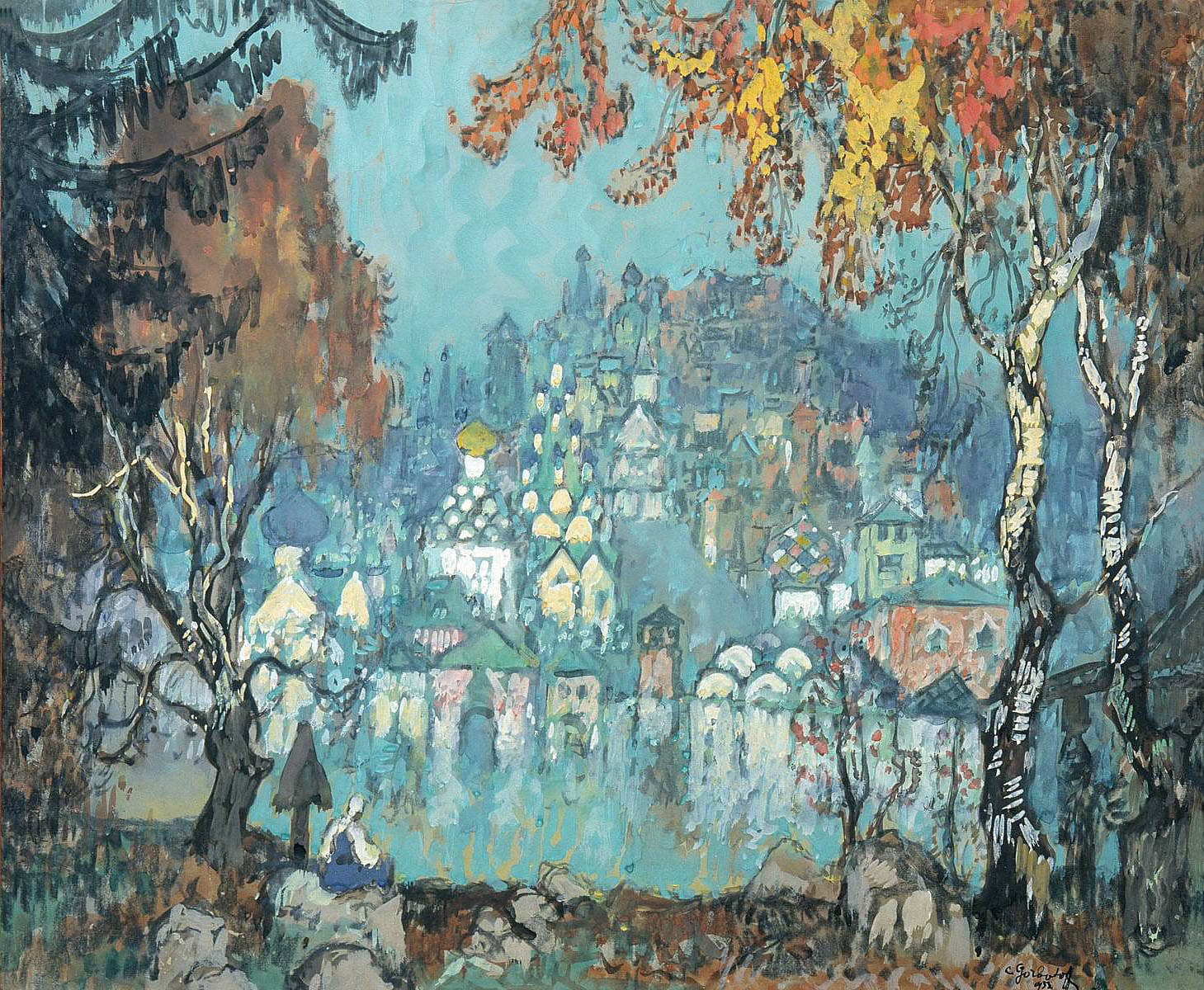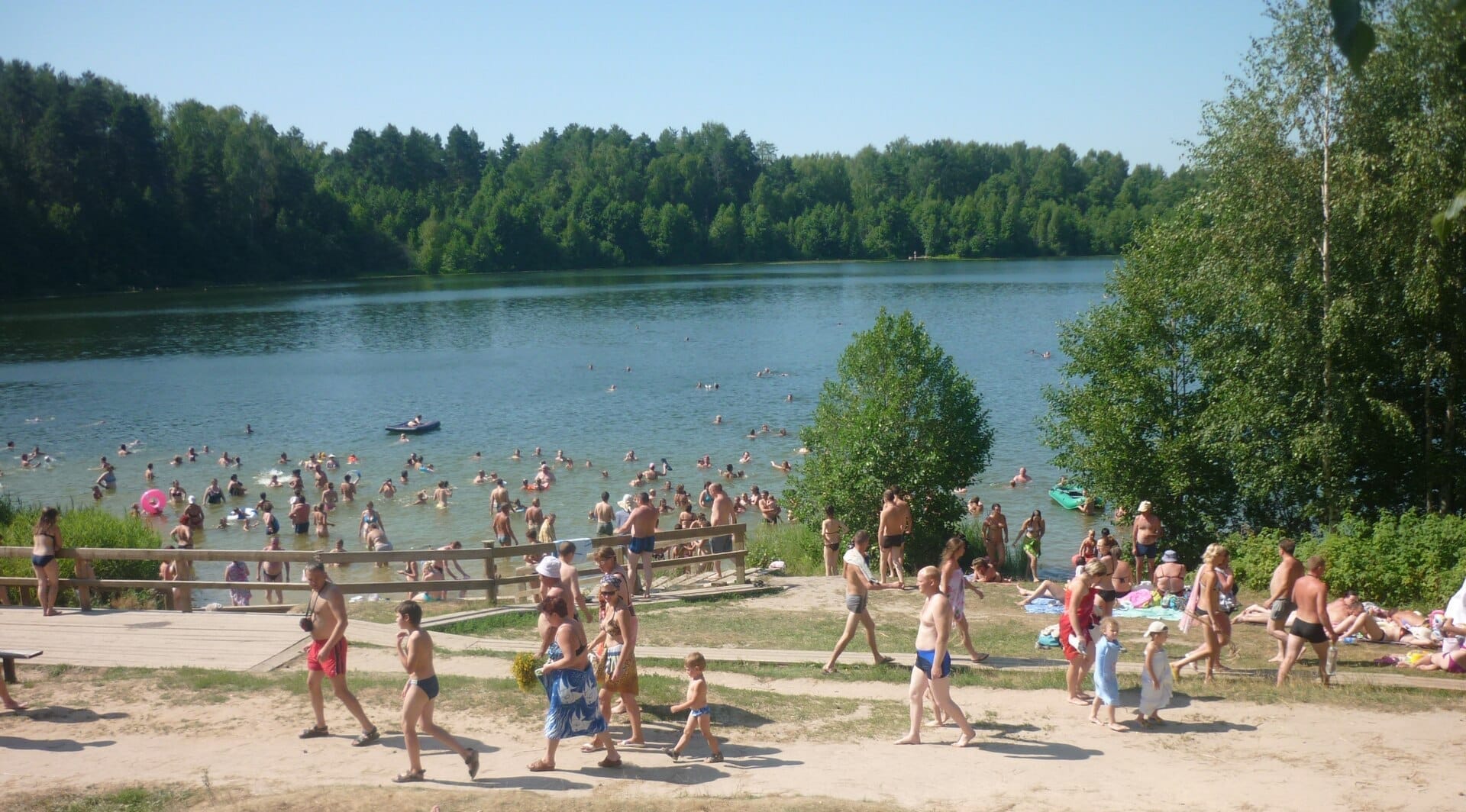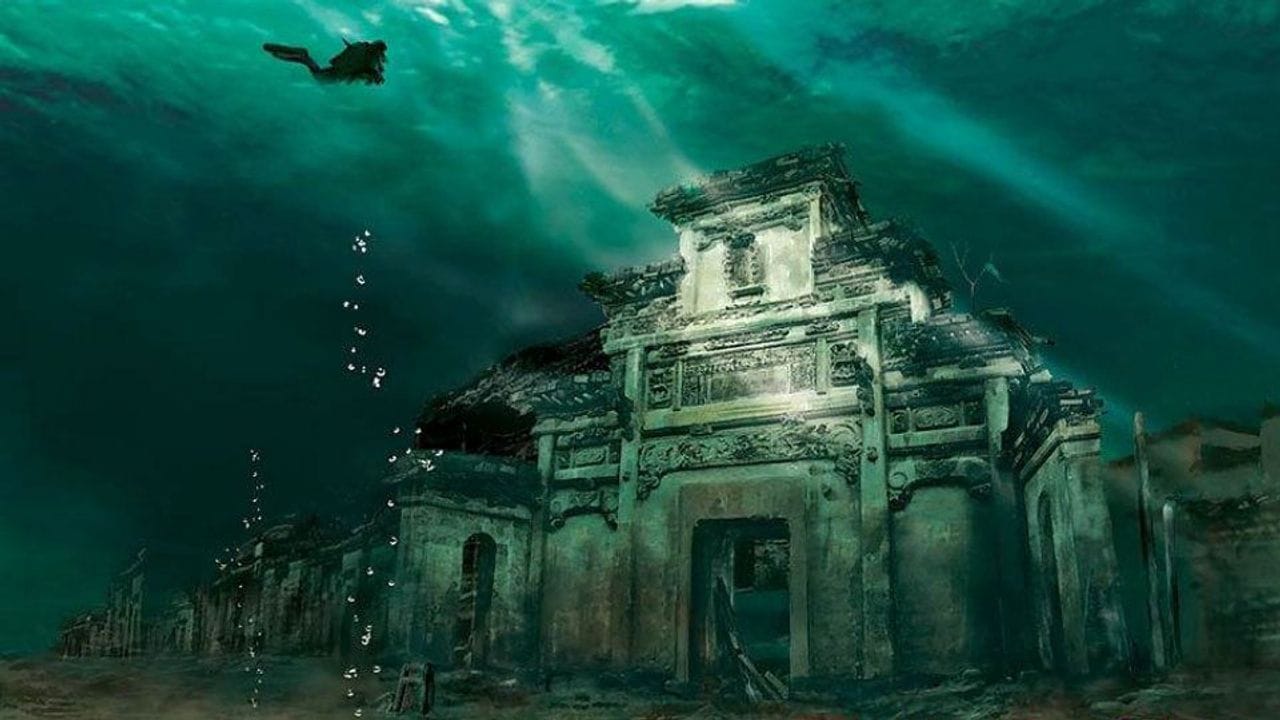The drowned city of Kitezh

Russia is rich in folktales, but one of my favorites is about a city that disappeared under a small lake when threatened with an attack by Batu Khan and the Golden Horde (the Mongols). There are many layers to this story set in the 13th century but, at its core, Kitezh (Ки́теж) was more of a Russian fortified settlement, hidden in the dense forest by a lake, and only those who knew the secret paths could find it. When the Golden Horde eventually did find it, the city disappeared into the lake, astonishing the Horde.
There are real drowned cities and more on that in a minute. But, with legends like this, depending on how you look at it, the city's disappearance can represent the apocalypse of invasion and oppression and death (pessimism) or it can represent a form of peaceful non-resistance to violence and spiritual renewal that is similar to Tolstoy's ideas (optimism). Here the key adjective matters: is the city dead and drowned or did it survive and it's just invisible? A cynic will have none of this; it's just wishful thinking. An agnostic will just like the story, especially the idea that if you are lucky you can see the buildings and the lights under the waters of the lake, like in the painting above, and hear its people singing hymns and ringing the bells of the cathedral.
The lake is there today; it's said to be Lake Svetloyar, near Nizhny Novgorod:

In Slavonic mythology, lakes and rivers were liminal spaces between humans and the Underworld, but the story of Kitezh only dates as far back as the 1780's, when the Kitezh Chronicle appeared. This was an anonymous book probably concocted by one of the Old Believers. They were (and are) Russian Orthodox dissenters who felt persecuted by a modernizing (westernizing) Russia, and who took refuge in the Transvolga area and around Russia's edges. The Chronicle does not mention the disappearance of the city into the lake; only that it disappeared after it was destroyed and all its inhabitants killed. But, the legend must have appealed to the dissenters because it took on spiritual dimensions and Kitezh became a sacred imaginary space. Maybe it was influenced by the Russian folktale about an island in the ocean called Buyan that seemed to appear and disappear with the tide. Pushkin liked that idea. I do too.
Over time, Kitezh became appealing to nationalist-inclined intelligentsia in the late 19th century, reaching a high in 1900-1917. Most notably: in the opera The Legend of the Invisible City of Kitezh and the Maiden Fevroniya (1907) by Nikolai Rimsky-Korsakov, with its main characters imported from another folktale.

There are some other interesting angles here. Why did the painter Konstantin Gorbatov choose to depict Kitezh as a floating ship - below? Interesting idea: it reminds me of Miyazaki's Castle in the Sky. In the Tomb Raider game, Lara finds Kitezh under a glacier, not a lake, which seems like an odd idea. And German filmmaker Werner Herzog went to Kitezh in his documentary Bells from the Deep (1993), but apparently did not hear any bells. Archeologists and geologists of Lake Svetloyar have been pretty negative too. No sunken city.

By contrast, in reality there are a number of interesting drowned cities, for example the important trading city Mologa that disappeared during the construction of Rybinsk Reservoir and hydroelectric plant in the late 1930's. A better example is Shicheng and Hecheng, which were submerged under Qiandao Lake in Zhejiang, China in 1959, for the Xin'an River Hydroelectric Dam. Both cities had a history of more than a thousand years when they disappeared from sight. Below is a real image of Shicheng today, where only scuba divers go:

Compare this with Nintendo's drowned Hyrule Castle in The Legend of Zelda: Wind Waker:

Two other mythological drowned cities: Atlantis and Lyonesse.
